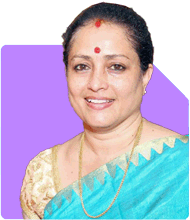Ramalingam Kalirajan |6335 Answers |Ask -Follow
Mutual Funds, Financial Planning Expert - Answered on Jun 25, 2024
He has an MBA in finance from the University of Madras and is a certified financial planner.
He is the director and chief financial planner at Holistic Investment, a Chennai-based firm that offers financial planning and wealth management advice.... more

I am 21 years old and I am in government job earn 45k/m I want to quit job at the age of 40 years how much savings per month will be good and which type of investment is better for my future??
Understanding Your Current Financial Situation
Monthly Income and Savings Potential
You earn Rs. 45,000 per month from your government job. This is a good start and gives you a solid base to build your savings and investment plan.
Savings Potential
It’s essential to determine how much you can comfortably save each month. Ideally, saving at least 30-40% of your income is a good target. This means saving around Rs. 13,500 to Rs. 18,000 per month.
Budgeting and Expense Management
Before deciding on your savings, it’s important to track your expenses. Make sure you have a clear understanding of your monthly expenses, including necessary spending and discretionary spending. This will help you identify areas where you can cut back and save more.
Setting Financial Goals
Short-Term Goals
Emergency Fund: Save 6-12 months of expenses in a liquid, safe investment like a savings account or a liquid mutual fund.
Insurance: Ensure you have adequate health insurance and term life insurance coverage.
Long-Term Goals
Retirement Corpus: Accumulate enough wealth to sustain your lifestyle post-retirement at 40.
Other Life Goals: Consider goals like buying a car, traveling, or higher education.
Investment Options for Future Growth
Public Provident Fund (PPF)
Safe and Tax-Efficient
PPF is a popular investment option. It offers tax-free returns and the security of government backing. A long-term investment in PPF can help you build a significant corpus.
National Pension System (NPS)
Retirement-Oriented
NPS is designed for retirement savings. It offers tax benefits and helps in building a retirement corpus. Consider investing regularly in NPS for a disciplined approach to retirement savings.
Mutual Funds
Diversified and Growth-Oriented
Investing in mutual funds is a great way to grow your wealth. You can choose from various types of mutual funds depending on your risk appetite.
Equity Mutual Funds
These funds invest in stocks and have the potential for high returns. They are suitable for long-term goals. Actively managed equity funds can outperform index funds, offering better returns.
Debt Mutual Funds
These funds invest in bonds and other debt instruments. They offer more stability than equity funds and are suitable for medium-term goals.
Balanced Funds
These funds invest in both equity and debt, providing a balanced risk-return profile. They are ideal for investors who want exposure to equity with less risk.
Systematic Investment Plan (SIP)
Regular and Disciplined Investing
Investing through SIP in mutual funds is a good strategy. It allows you to invest a fixed amount regularly, averaging out the cost and reducing market timing risks.
Gold Investments
Safe Haven Asset
Investing in gold can act as a hedge against inflation. Consider investing in gold ETFs or mutual funds for better liquidity and returns compared to physical gold.
Strategy for Achieving Your Financial Goals
Calculating the Required Savings
To determine how much you need to save monthly, consider your future financial needs. Assume a reasonable rate of return on your investments to estimate the corpus required.
Regular Savings and Investments
Start by saving a fixed percentage of your income. Increase your savings rate as your income grows. Use automated transfers to ensure you invest regularly without fail.
Review and Rebalance Your Portfolio
Regularly review your investment portfolio. Rebalance it annually to ensure it aligns with your risk tolerance and financial goals.
Avoid Unnecessary Risks
Avoid high-risk investments that can lead to significant losses. Focus on a diversified portfolio that balances risk and return.
Tax Planning and Efficiency
Utilizing Tax Benefits
Maximize your investments in tax-saving instruments like PPF, NPS, and ELSS funds. This reduces your taxable income and increases your investable surplus.
Long-Term Capital Gains
Invest in equity instruments with a long-term perspective to benefit from lower capital gains tax.
The Role of a Certified Financial Planner
Professional Guidance
A Certified Financial Planner (CFP) can provide personalized advice based on your financial situation and goals. They can help you choose the right investments and plan for your future effectively.
Monitoring and Adjustments
A CFP can help monitor your progress and make necessary adjustments to your plan. This ensures you stay on track to achieve your goals.
Final Insights
Achieving your goal to retire at 40 requires disciplined savings and smart investments. Start by saving a significant portion of your income and investing it wisely. Utilize tax-efficient investment options and regularly review your portfolio.
Work with a Certified Financial Planner to create a tailored financial plan. This will help you navigate complex financial decisions and stay on track towards your goal.
Remember, the key to success is consistency and discipline. By following this approach, you can build a substantial corpus and enjoy financial independence by 40.
Best regards,
K. Ramalingam, MBA, CFP
Chief Financial Planner
www.holisticinvestment.in
You may like to see similar questions and answers below
Sunil Lala |200 Answers |Ask -Follow
Financial Planner - Answered on Apr 18, 2024
Ramalingam Kalirajan |6335 Answers |Ask -Follow
Mutual Funds, Financial Planning Expert - Answered on Apr 15, 2024
Ramalingam Kalirajan |6335 Answers |Ask -Follow
Mutual Funds, Financial Planning Expert - Answered on Jul 03, 2024
Ramalingam Kalirajan |6335 Answers |Ask -Follow
Mutual Funds, Financial Planning Expert - Answered on Jun 30, 2024
Ramalingam Kalirajan |6335 Answers |Ask -Follow
Mutual Funds, Financial Planning Expert - Answered on Aug 13, 2024
Ramalingam Kalirajan |6335 Answers |Ask -Follow
Mutual Funds, Financial Planning Expert - Answered on Sep 19, 2024
Ramalingam Kalirajan |6335 Answers |Ask -Follow
Mutual Funds, Financial Planning Expert - Answered on Sep 19, 2024
Milind Vadjikar |157 Answers |Ask -Follow
Insurance, Stocks, MF, PF Expert - Answered on Sep 18, 2024
Milind Vadjikar |157 Answers |Ask -Follow
Insurance, Stocks, MF, PF Expert - Answered on Sep 18, 2024
Dr Karthiyayini Mahadevan |1074 Answers |Ask -Follow
General Physician - Answered on Sep 18, 2024
Dr Karthiyayini Mahadevan |1074 Answers |Ask -Follow
General Physician - Answered on Sep 18, 2024
Dr Karthiyayini Mahadevan |1074 Answers |Ask -Follow
General Physician - Answered on Sep 18, 2024
Dr Karthiyayini Mahadevan |1074 Answers |Ask -Follow
General Physician - Answered on Sep 18, 2024
Dr Karthiyayini Mahadevan |1074 Answers |Ask -Follow
General Physician - Answered on Sep 18, 2024
Dr Karthiyayini Mahadevan |1074 Answers |Ask -Follow
General Physician - Answered on Sep 18, 2024


























